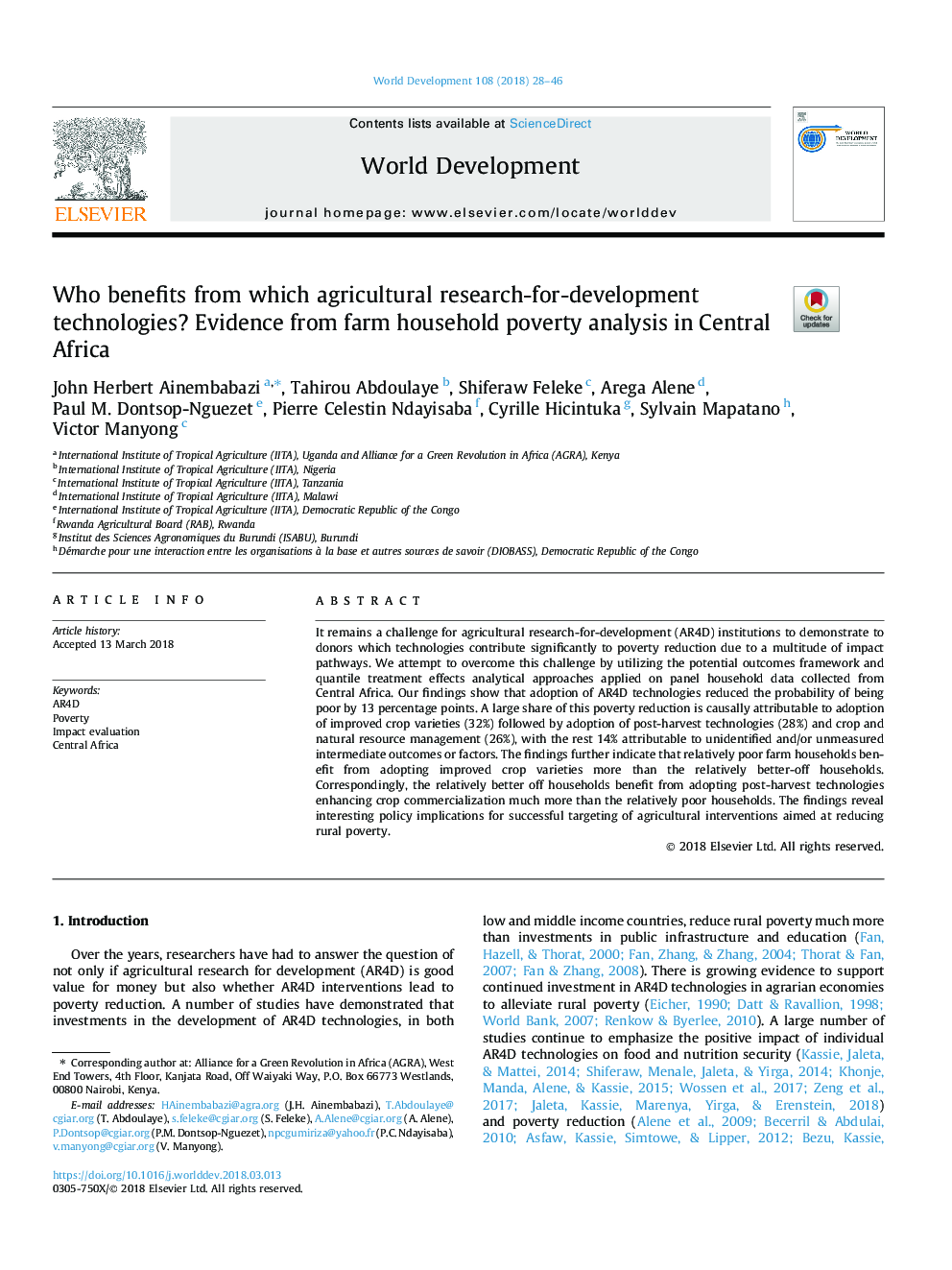| Article ID | Journal | Published Year | Pages | File Type |
|---|---|---|---|---|
| 7391675 | World Development | 2018 | 19 Pages |
Abstract
It remains a challenge for agricultural research-for-development (AR4D) institutions to demonstrate to donors which technologies contribute significantly to poverty reduction due to a multitude of impact pathways. We attempt to overcome this challenge by utilizing the potential outcomes framework and quantile treatment effects analytical approaches applied on panel household data collected from Central Africa. Our findings show that adoption of AR4D technologies reduced the probability of being poor by 13 percentage points. A large share of this poverty reduction is causally attributable to adoption of improved crop varieties (32%) followed by adoption of post-harvest technologies (28%) and crop and natural resource management (26%), with the rest 14% attributable to unidentified and/or unmeasured intermediate outcomes or factors. The findings further indicate that relatively poor farm households benefit from adopting improved crop varieties more than the relatively better-off households. Correspondingly, the relatively better off households benefit from adopting post-harvest technologies enhancing crop commercialization much more than the relatively poor households. The findings reveal interesting policy implications for successful targeting of agricultural interventions aimed at reducing rural poverty.
Related Topics
Social Sciences and Humanities
Economics, Econometrics and Finance
Economics and Econometrics
Authors
John Herbert Ainembabazi, Tahirou Abdoulaye, Shiferaw Feleke, Arega Alene, Paul M. Dontsop-Nguezet, Pierre Celestin Ndayisaba, Cyrille Hicintuka, Sylvain Mapatano, Victor Manyong,
